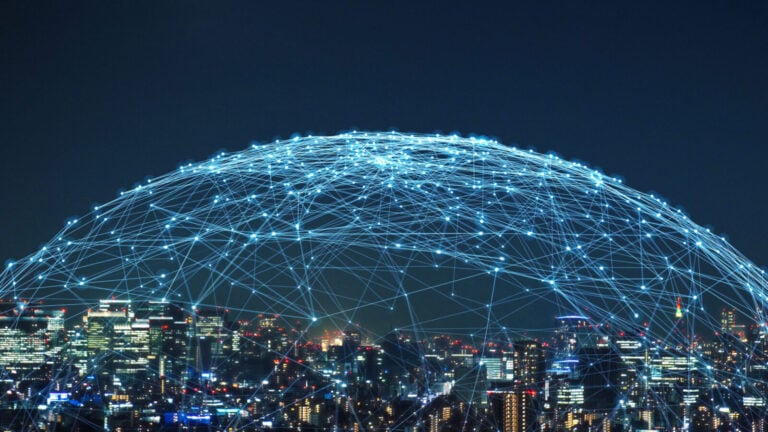In the 1989 film Field of Dreams, Iowa farmer Ray Kinsella, played by Kevin Costner, hears a voice encouraging him to build a baseball field in the middle of his corn field.
“If you build it, he will come.”
In other words, if you create something truly valuable, people will be drawn to it, even if the risk seemingly outweighs the reward.
Like Ray Kinsella, every major player in the AI Revolution has adopted a build-it-and-he-will-come strategy. Not building AI infrastructure is simply no longer an option.
Hyperscalers – and companies aiming to become one – are hearing the call to build. Take OpenAI, which has announced a frenzy of partnerships in recent weeks.
On Monday, OpenAI revealed it teamed up with Broadcom Inc. (AVGO) to develop and deploy 10 gigawatts (GW) of specialized AI chips. This collaboration is part of OpenAI’s strategy to secure custom hardware for its AI systems. Deployment is expected to begin in late 2026.
This follows last week’s multiyear, multigeneration monster deal between OpenAI and Advanced Micro Devices Inc. (AMD), where AMD will supply up to 6 GW of GPU muscle to power OpenAI’s next-gen infrastructure.
OpenAI has also signed multi-billion-dollar deals with tech giants Nvidia Corp. (NVDA) and Oracle Corp. (ORCL).
Investors, beware.
The technology may indeed deliver epochal gains in the long run, but paying for those future gains could crush shareholders in the short run.
Hyperscalers are torching cash like it is kindling. They assume it is better to risk overbuilding and absorb the balance-sheet pain than to risk irrelevance.
But the future returns are uncertain, and the payback horizon is murky.
In the end, the market may reward not those who build the virtual world, but those who power it.
The AI Revolution will depend on the miners and power producers who turn electricity and metal into the blood and bones of artificial intelligence.
After all, if hyperscalers are building, they’re going to need picks and shovels to do so.
That’s why, in today’s Smart Money, I’ll share how you can find the best pick-and-shovel plays. But first, let’s start with how much power is required to keep the data centers’ lights on.
Powering the AI Revolution
For starters, AI’s data centers are reshaping the national power grid.
A single hyperscale campus typically draws 50–100 megawatts (MW), the equivalent of tens of thousands of homes. Dominion Energy Inc. (D) serving Virginia’s “Data Center Alley,” forecasts 7 GW of new demand by 2035 from data centers alone.
That’s larger than the entire load of some regional utilities.
Looking nationwide, Bain & Company estimates that AI compute in the U.S. will require 100 GW of new power capacity by 2030, half of which will be in the U.S. That’s like adding the entire power generation capacity of South Korea in just five years.
Utilities companies could also benefit from this boom.
Once a hyperscaler signs a 20-year power purchase agreement, the utility locks in cash flow like a regulated annuity. Renewable developers like Brookfield Renewable Partners LP (BEP) and Iberdrola SA (IBDRY) also win, since hyperscalers are under pressure to diversify their power supply.
Those contracts – often 10-15 years long – fund entire solar or wind projects.
And then there’s nuclear.
With 24/7 demand, intermittent renewables can’t do the job alone. Small modular reactors (SMRs), piloted by firms like NuScale Power Corp. (SMR), could become embedded in hyperscale clusters.
Microsoft Corp. (MSFT) has already advertised jobs for nuclear experts. If even a fraction of Bain’s 100 GW forecast materializes, nuclear power becomes a necessity.
Finally, energy storage and microgrids will also receive a steady flow of investment dollars.
But if power is the blood circulating through data center infrastructure, metals are the bones.
Here’s what I mean…
That’s So Metal
In effect, every ton of metal pulled from the ground is a claim on the AI buildout.
Metals companies don’t need to guess which AI model wins or which agent framework dominates; they just need to deliver the raw materials that make the entire ecosystem possible.
Take copper, for example. The math is staggering.
A single hyperscale site can require 30,000–40,000 tons of copper, from cables to transformers to busbars. This means a 100 MW campus consumes as much copper as a mid-sized mine produces in weeks.
Multiply that by hundreds of sites, and you begin to appreciate the scale of this new source of demand.
Over the next five years, copper demand is on track to surge from about 27 million metric tons to nearly 33 million tons – a massive 21% increase. Meanwhile, supply growth will struggle to keep pace. Shackled by geological exhaustion, permitting delays, and political risk, the copper supply will not likely grow more than 2% per year.
As a result of the diverging trendlines between surging demand and sluggish supply growth, the annual copper deficit could explode. Today’s modest 200,000 shortfall could swell 10-fold to 2 million tons by 2030, even under moderate assumptions.
A supply gap of that magnitude could propel the copper price to all-time highs, creating windfalls for companies.
The Right Picks (and Shovels)
The bottom line is that the utilities and miners will continue cashing the checks in the race for AI supremacy. Their business models are not theoretical; they are measurable and proven.
They don’t need to care whether GPT-7 outperforms Gemini Ultra or whether OpenAI’s next model hallucinates less than Anthropic’s. They get paid every time a new data hall lights up, every time another transformer hums, every time a ton of copper vanishes into a conduit.
Therefore, for investors seeking exposure to the AI Revolution without betting on which version of intelligence wins, power companies and miners offer a compelling opportunity.
Multiple stocks in my Fry’s Investment Report portfolio offer that sort of opportunity.
These companies include large producers of copper and aluminum, and several ETFs that hold baskets of stocks that operate in the uranium and nuclear industries… the solar industry… and the wind energy industry.
That’s just to name a few.
I believe these pick-and-shovel plays offer compelling opportunities at their current quotes.
To learn how to access these names, simply click here.
Regards,
Eric Fry


